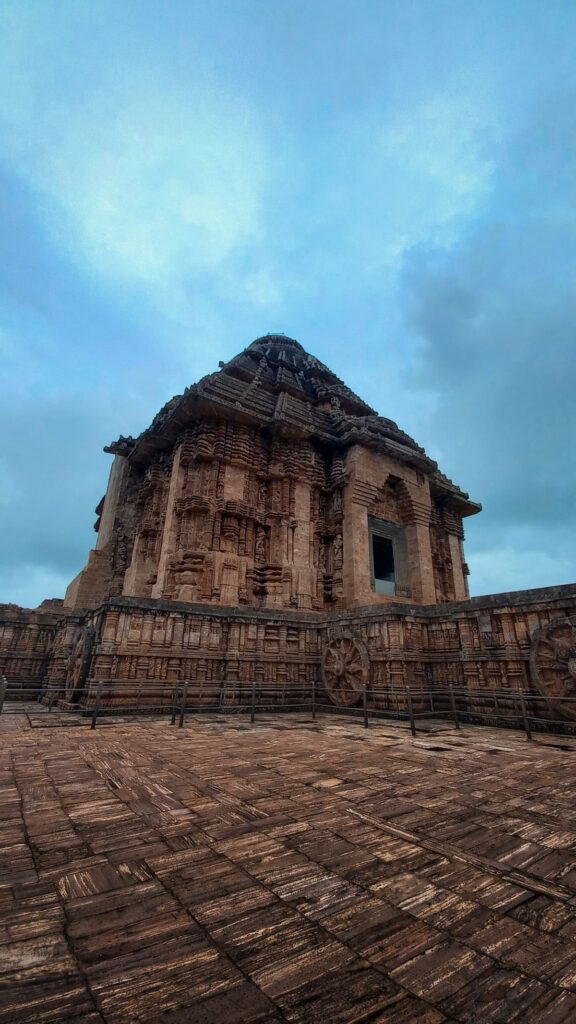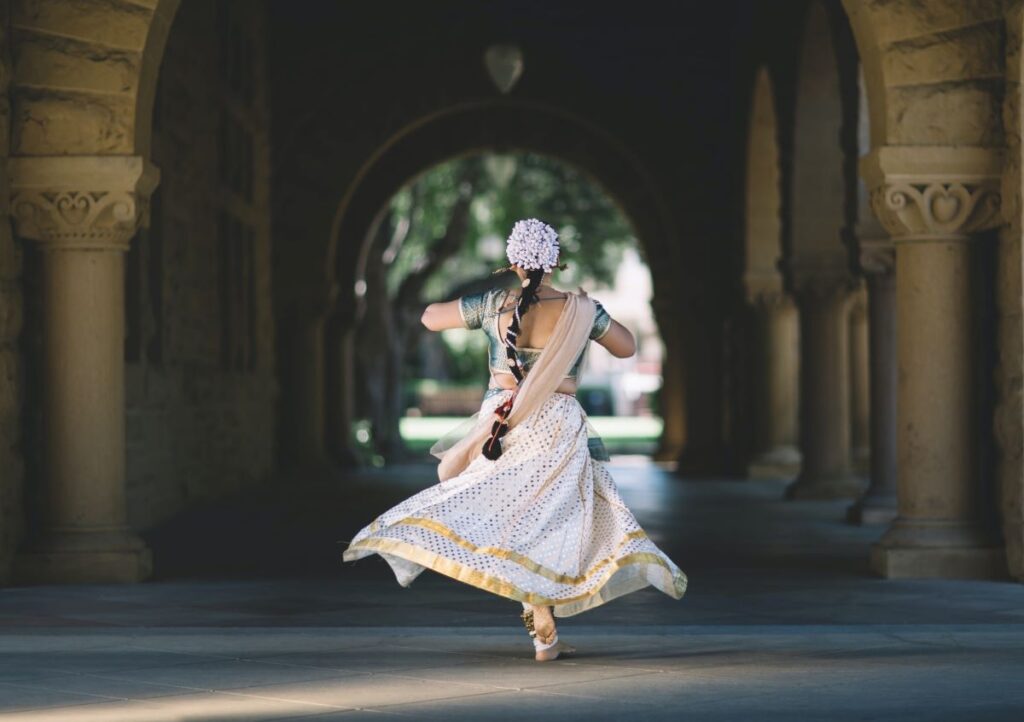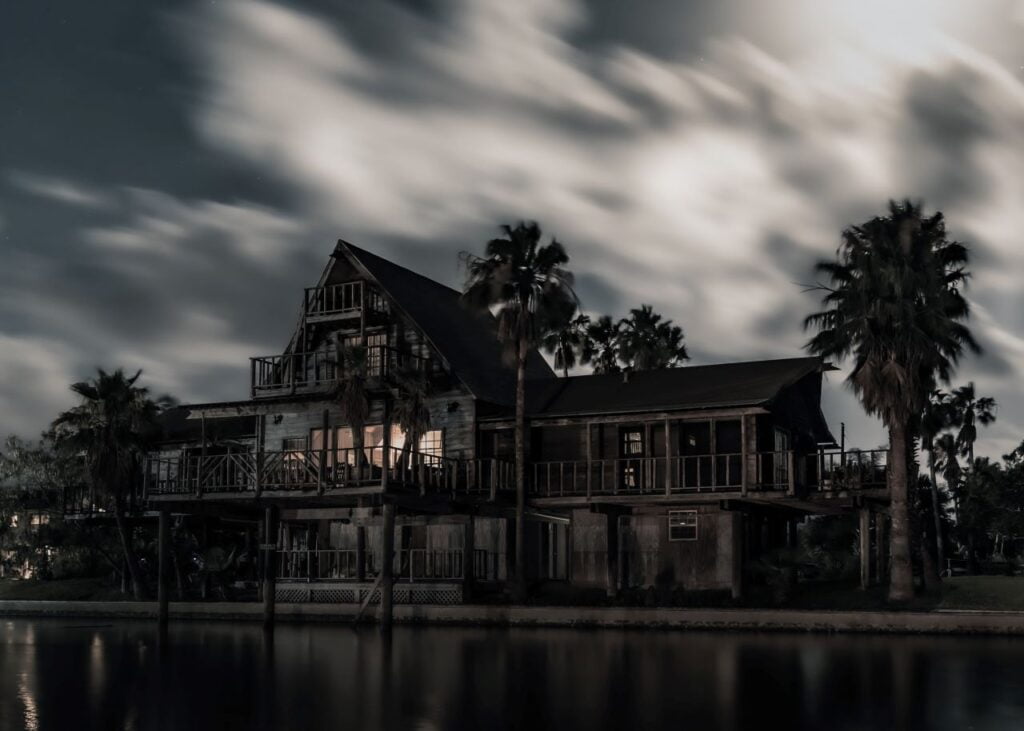Table of Contents
Introduction
Bha from “Bhava”, meaning Emotion, Ra from “Raga”, meaning Music or Melody, and Tha from “Thala”, meaning Rhythm. Bharatnatyam directly translates to the Dance that conveys emotion, music, and rhythm, elements that also define Architecture. Originated as a temple dance by the devadasis, also known as “Servants of God”. They enjoyed a high status in society and received a great deal of respect. This dance form flourished especially under the Pallava and Chola Kings, and it was during this period that many temples were constructed.
Temple Culture
According to Hindu Culture, a temple wasn’t just a place of worship, but also a center for intellectual and artistic people life, serving as a community center. Dravidian Architecture had a major boost during the Chola Period. As part of the victories and successes of rulers, Art, Architecture, and Artists were respected and considered at a high value in the society. Many temples, mainly dedicated to Lord Shiva, Lord Vishnu, and their various avatars were built during this period.
These temples had a Natamandapa, pillared dance halls for purpose of recitals and performance. The surface of almost every architectural element was illustrated with mythological tales of gods, portrayed along with elegant temple dancers.

The typical plan of a Hindu temple is a reflection of the Mandala. Its sacred geometry lies in the accurate planning of the temple which is in relation with the cardinal directions along with the astronomical movements and positions.
Vastu Shastra
The form of the Vastupurusha Mandala is derived from a square, which is embedded inside a circle. The circle represents the movement and cyclical time of the terrestrial world, whereas the square represents the non-moving absolute form attributed to the celestial world.
The guidelines set out in the Vastu Shastra, a text on the science of building are to be followed by the Stapathi or Architect, to symbolically maintain the terrestrial and cosmic laws, which follow the mathematical divisions that contain the Purusha.
The Vastu Purusha Mandala is the reflection of all existence and is a cosmic design that can be manifested in a body, temple, city, or universe. A temple is a physical manifestation of the natural world, the mountains, rivers, and caves, and aligns itself to its cosmic axis. Being derived from the mandala, the Hindus considered a temple to be the representation of Mount Meru, surrounded by continents, ocean, and heavenly bodies.
The gopura, with the horizontal tiers, is a recreation of Bhoomi or earth, and the dimly lit inner garbhagriha is an architectural expression of a cave.
Natyashastra, Bharatnatyam and Architecture
Natyashastra, said to have been written by Sage Bharata, has 37 chapters and is up to 2000 years old. This book on classical dance is the most prestigious book ever written in any language. While the first half of this book deals with Rasa, the second half deals with prose and includes a chapter on Architecture. Natyashastra deals with theatre as a celebration of life and a testament to the joy of divine worship.
The 3 aspects which are also the building blocks for performing arts (Nrittya) are:
Nritta – Technical Aspect
Natya – Expressional Aspect
Geetam and Vadyam – Musical Aspect
Nritta is a technical aspect that deals with the bodily gestures of a dancer. Shilpa Shastra (Science of Arts and Crafts) mentions four basic Bharatnatyam postures of the idols in temples – Sthanaka (standing), Asana (seated), Shayana (reclining), and Yanaka (deities who serve as a ride for other deities). Each of these Bharatanatyam postures had further classification.

The standing dance posture is named a bhanga and there are five basic styles. Natyashastra has mentioned the same dance posture for dancers, and the architecture of the human body created by these Bharatanatyam postures and elegant and beautiful. The dancer moves in space along the line or triangular formations, creating a symmetrical pattern. Bharatnatyam is characterized by a linear form of the body and linear spatial patterns, making the classical dance form extremely dynamic.
While Nritta studies the human body and gestures, Natya studies human emotions and personalities. Moreover, the Natyashastra also covers the theory about vocal music and instrumental music.
As mentioned earlier, the second half of the Natyashastra deals with Architecture and explains in detail of various spaces required for classical dance. One such space is the playhouse or theatre. These theatres are moderate in size and resembled the Athenian theatre in certain ways. They could accommodate around 15000 people. Three main playhouses were described in the Natyashastra – Oblong, Square, and Triangular.
These spaces gave away 9 different varieties of playhouses depending on the size of the theatre – Large, Medium, and Small. These nine types were measured in terms of dandas and gave 18 different dimensions. The theatre was divided into 3 rooms – the tiring room (Nepathya), the stage (Rangapitha or Rangasirsa), and the auditorium (Rangamandala)
Chidambaram Nataraja Temple

It is a translator that ties together the various facets of Hindu philosophy and culture. The physical exterior and structural iconography are linked to the human body, architecture, and classical dance together on a spiritual and cosmic level. They reiterate the rhythmic momentum. This temple is dedicated to Lord Shiva, the cosmic dancer, and hence, is itself a dedication to the classical dance form, Bharatnatyam.
Lord Shiva is worshipped in different forms, and here he is worshipped through space. Unlike most places, instead of a Shiva Lingam, Lord Shiva is seen performing the Ananda Tandavam, which is also known as the cosmic dance of bliss.
Housing nine gateways, with four of them having Gopurams, each with seven levels, positioned facing the four cardinal directions. The main hall of the temple is the Nritta Sabha, and the carvings of this room depict legendary figures prominent in classical dance music and stories. This temple is famous for portraying the 108 Bharatnatyam poses as depicted in the Natyashastra.
The temple building itself is in a constant movement, the culmination of which is visualized in the Nataraja, representing a multisensory transformation.
Brihadeeshwara Temple

Largest of the South Indian Temples and an extraordinary example of a fully realized Dravidian Architecture is dedicated to Lord Shiva. Out of the 108 dance postures in Natyashastra, 81 are carved on the upper storey wall of the aditala. It was in 1956, the 81 sculptures depicting the different Bharatnatyam poses from Natyashastra were discovered in the first tier of the 66m tall structure, and these sculptures serve as a symbol of the Chola architecture. Many important and prestigious dance festivals have been held at this venue.
Shore temple

Along with Bharatnatyam, other prominent dance forms, including Kuchipudi, Kathak, Mohiniyattam, and Kathakali, are also performed against this amazing backdrop of Pallava Rock Sculptures. Mahabalipuram Dance Festival is a popular dance festival and is set against this elegant backdrop. This temple was built during the reign of Narasimhavarman II and faces east towards the sea. The temple houses 3 shrines, of which east and west are dedicated to Lord Shiva and the middle one to Lord Vishnu.
Konark Sun Temple

Konark Dance Festival, the biggest dance festival in Odisha, is held in December and is set against the backdrop of the Sun Temple, Konark. Every inch of the Salamander or the dancing hall of this shrine is covered with fine artistic designs of ancient times and includes sculptures in Odissi dance poses. This five-day dance festival starts off with Odissi and Kathak, which are the traditional dance performances in Odisha.
The Ras mancha
The Ras Mancha, with its pyramid-shaped roof, raised on a laterite plinth, is set amidst a lush and manicured lawn. The temple, built in 1587, largely celebrates Lord Vishnu in his incarnation as Krishna, which was the presiding deity of the Malla Kings back then. Bir Hambir worshipped Madan Mohan in Bishnupur and the temple was built during his reign.
The temple has 108 arched gateways and the pillars that support these structures are beautifully carved with intricate details depicting dancers and musicians. Out of the 108 Bharatnatyam poses in Natyashastra, the pillars are embellished with 64 Bharatnatyam poses. The Ras festival is an important festival carried out in this temple and is associated with Lord Krishna and his eternal love Devi Radha.
Sarangapani Temple

Out of the five Vishnu temples associated with the Mahamaham festival, which happens once in 12 years in Kumbakonam, the Sarangapani Temple is the largest Vishnu temple and has the tallest temple tower in town. The Rajagopuram or the main gateway has figures depicting various religious stories. Out of the 108 karanas in Bharatnatyam, a few are sculpted around the walls of the temple.
Conclusion
Classical Dance, like Architecture, is an exploration of space. For a dancer, the element of time is defined by space, and a dancer describes the three-dimensional space around themselves through the various movements and Bharatanatyam postures.





